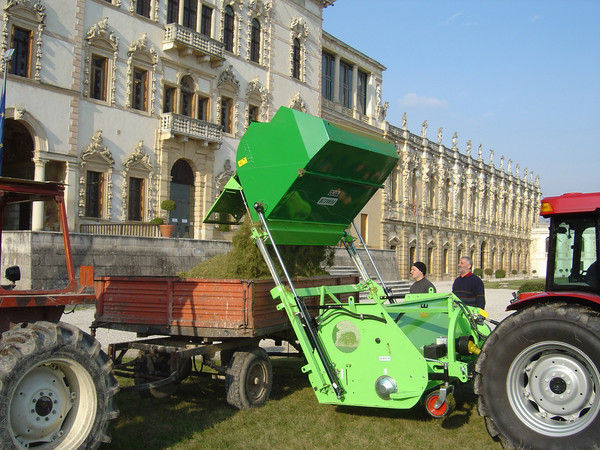
Urban green areas: an opportunity for agriculture
The Italian urban green areas are increasing: at the present time the availability is over 30 square meters per capita. New building procedures are rising, with buildings covered by vertical gardens and roof gardens. In this way, the farmers' range of action is widening, from cultivated fields to plant walls through traffic dividers with flowerbed
With Italian countryside loosing ground, daily threatened by uncontrolled overbuilding and urban blight, the green areas gain ground. In the provinces the surface occupied by parks and gardens is growing at the rate of 1% yearly and in the last ten years it earned an average of 4 square meters per citizen.
The result is that today each citizen has approximately 30 square meters of lawns and parks. Even though much remains to do, the Italian agriculture is demonstrating to have captured this positive trend, by promoting a new sinergy with architecture. It is also working on innovative urbanistic solutions capable of responding efficiently to the new demands of urban life. This fact was revealed by Cia (the Confederation of Italian Farmers), also according to the 2012 survey published by Istat on the quality of environment in the Italian cities.
The new lifestyles and the environmental emergencies – as Cia explained – forced us to rethink urban spaces by giving green areas a new role to play, not only limited to specific areas. Today the natural element creeps into architecture in a new way, penetrating spaces and interstices obtained from the urban weaving. Vertical gardens, plant walls, roof gardens and buildings set among green dunes take shape. These are new forms of greenery created by the most recent studies of the sector, that worked for several years in cooperation with an environmentally respectful architecture.
The safeguard of landscape and greenery is possible thanks to the cooperation between architecture and floriculture and the research in these fields. The green areas increase the quality of life inside city walls, with the involvement of multifunctional agricultural enterprises and has a double function: on one side it limits smog effects – responsible for the 11% of asthma worsening in children and 18% of severe problems for old people affected by respiratory deseases. On the other side, it is a factor capable of improving the quality of urban life, due to its psychologically healthy effect.
But much remains to do on this path.
In Northeastern cities the average of green areas is around 45,4 square meters pro capita and in the Centre it stops at 23 square meters. The situation gets better in Southern cities with 37,1 square meters and in Northwestern ones (24,3 sqaure meters). That is why the city planning – as Cia highlighted – has to be rethought according to the environmental and food demands that our planet is forced to take on. A building built according to the criteria of eco-sustainability contributes to the absorption of urban emissions. Besides, it is a guarantee of efficient energy use, water-savings and therefore economic savings too.
Agriculture and floriculture have immediately accepted the challenge of urban naturalization, fixed by the Kyoto Protocol. They do it – as the farmers confederation concluded – responding to the sophisticated demands of the most eco-friendly city planning. A new professionality was born for today's farmers. It is an innovative figure with the task of producing urban green areas and cultivating flowerbed on traffic dividers, green walls on buildings' facades and much more.
Green virtuosities are realized also inside apartments; fairs and exhibitions with creative and suggestive ideas increase. All of this for a business volume capable of moving hundreds of million euros, and that promises to produce benefits also for mechanization by increasing the purchase of machinery and equipment for the maintenance of green areas and for the emerging demands from both businesspeople and private citizens.








